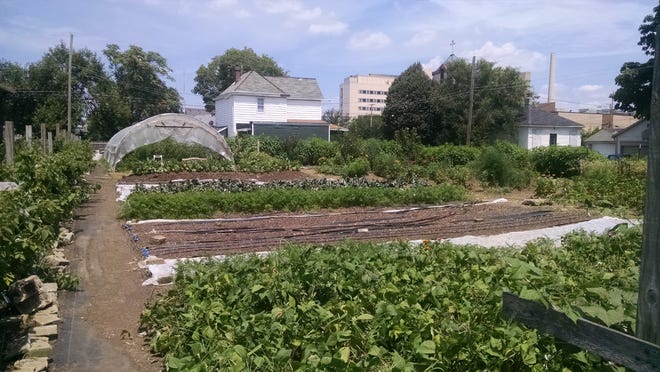Number of urban farms in Columbus multiplies times five since 2014

Gardening is one of the most popular hobbies throughout the United States and here in Greater Columbus. The pandemic only heightened interest in all types of gardening activities including community gardening in urban areas such as Columbus. It is estimated that there are more than 200 community gardens of all types and sizes in Greater Columbus, with many of these gardens producing food crops such as fruits, vegetables, and herbs.
Urban farming is also proliferating in Greater Columbus, with the number of urban farms increasing from seven in 2014 to more than 35 urban farms operating today.
Is it a garden or a farm?
It is sometimes difficult to tell the difference between a garden and a farm in an urban landscape. Urban farms obviously look different than conventional farms located in rural locations. Urban farms tend to be much smaller than rural farms and lack traditional red livestock barns and large mechanized farm equipment found on many farms in rural locations. Urban farms tend to grow a more diverse variety of vegetables and fruits and market their products directly to consumers at farmers markets and through other direct marketing strategies.
Gardening:Are you caring for your poinsettias correctly?
One method for distinguishing an urban farm from an urban garden is to determine what happens to the food being grown. In a community garden or a backyard garden, the food grown is typically consumed by the gardener’s family and maybe some lucky friends and neighbors.

Conversely, an urban farmer produces food to be marketed to others, either as a for-profit business or as a social enterprise. A social enterprise is an operation which exists to address community needs such as food insecurity, job training, or neighborhood development. Many of the urban farms operating in Greater Columbus today operate as a social enterprise to address food insecurity in food deserts and other underserved neighborhoods.
The benefits of urban farming
There are several trends which are driving the current increase in urban farming in Greater Columbus, with increasing access to locally produced, unprocessed fruits and vegetables being a primary driver. Many urban farmers strive to provide healthy food options for consumers, many of whom live in food deserts or experience other barriers to accessing fresh foods in their neighborhoods.
Consumer preference for locally produced foods is increasing, and food grown closer to where consumers are located in urban neighborhoods appeals to many consumers. When food is grown closer to where it will be eaten, it is typically fresher, higher in nutritional value, lasts longer in the refrigerator or on the kitchen counter, and less food waste typically occurs.

While there is less vacant, unused land in Greater Columbus than in many other cities, urban farming can be an effective use for underutilized land in some urban neighborhoods. Urban farming can have environmental benefits in urban neighborhoods including reducing stormwater runoff, recharging ground water, reducing the heat island effect, carbon sequestration, and providing habitat for pollinators and other beneficial insects.
Urban farming also provides economic benefits by providing jobs and job training, particularly in underserved neighborhoods.
Gardening:Reduce your carbon footprint by recycling Christmas trees, decorations
Want to become an urban farmer?
If you’d like to learn more about starting an urban farm in Greater Columbus, consider enrolling in the 2023 Master Urban Farmer Workshop Series, which begins this coming Thursday, Jan. 12, from 6:30 to 9:30 p.m. The class will meet every Thursday evening through March and guide participants through the process of evaluating options for developing an urban farm or urban food-based business.
Participants will learn how to evaluate urban sites for food production, how to access funding, vegetable and fruit production basics, legal and zoning issues, marketing strategies for vegetables and fruits, soil testing, backyard poultry production, and much more.
A few open seats remain for this class. Registration is available at: go.osu.edu/.
Mike Hogan is an Extension educator, Agriculture and Natural Resources, and associate professor with Ohio State University Extension.
Read More: Number of urban farms in Columbus multiplies times five since 2014

